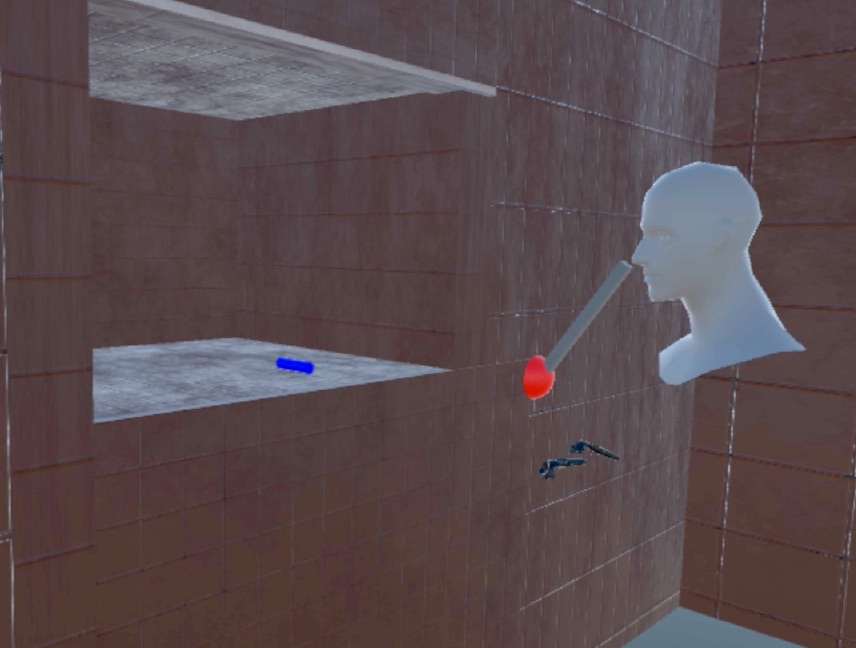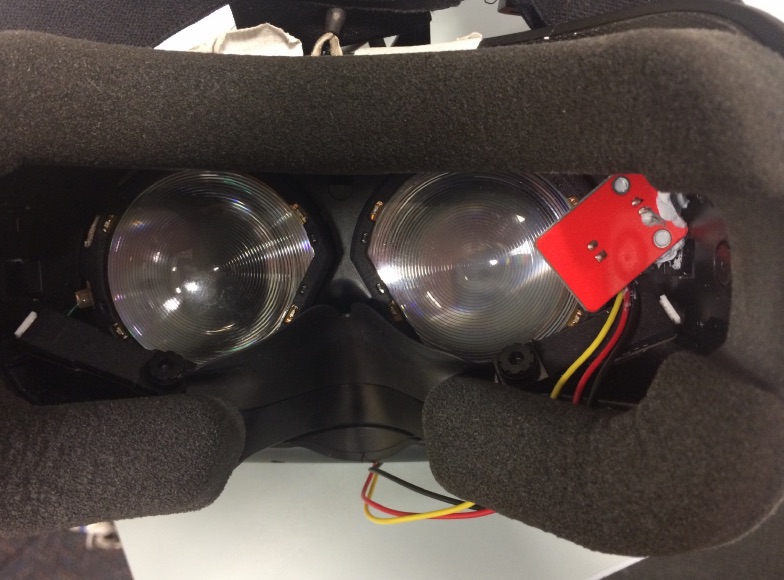Hao Chen
Hao Chen
PhD Student
Hao Chen is a visiting Ph.D student from HIT Lab NZ. Hao received his B.S. degree in School of Astronautics from Harbin Institute of Technology(China) in 2009 and received his Master’s degree in School of Control science and Engineering from Zhejiang University (China) in 2012. In 2014, he joined in HIT Lab NZ as a Ph.D student.
Projects
-
Empathy in Virtual Reality
Virtual reality (VR) interfaces is an influential medium to trigger emotional changes in humans. However, there is little research on making users of VR interfaces aware of their own and in collaborative interfaces, one another's emotional state. In this project, through a series of system development and user evaluations, we are investigating how physiological data such as heart rate, galvanic skin response, pupil dilation, and EEG can be used as a medium to communicate emotional states either to self (single user interfaces) or the collaborator (collaborative interfaces). The overarching goal is to make VR environments more empathetic and collaborators more aware of each other's emotional state.
Publications
-

Effects of Sharing Real-Time Multi-Sensory Heart Rate Feedback in Different Immersive Collaborative Virtual Environments
Dey, A., Chen, H., Zhuang, C., Billinghurst, M., & Lindeman, R. W.Dey, A., Chen, H., Zhuang, C., Billinghurst, M., & Lindeman, R. W. (2018, October). Effects of Sharing Real-Time Multi-Sensory Heart Rate Feedback in Different Immersive Collaborative Virtual Environments. In 2018 IEEE International Symposium on Mixed and Augmented Reality (ISMAR) (pp. 165-173). IEEE.
@inproceedings{dey2018effects,
title={Effects of Sharing Real-Time Multi-Sensory Heart Rate Feedback in Different Immersive Collaborative Virtual Environments},
author={Dey, Arindam and Chen, Hao and Zhuang, Chang and Billinghurst, Mark and Lindeman, Robert W},
booktitle={2018 IEEE International Symposium on Mixed and Augmented Reality (ISMAR)},
pages={165--173},
year={2018},
organization={IEEE}
}Collaboration is an important application area for virtual reality (VR). However, unlike in the real world, collaboration in VR misses important empathetic cues that can make collaborators aware of each other's emotional states. Providing physiological feedback, such as heart rate or respiration rate, to users in VR has been shown to create a positive impact in single user environments. In this paper, through a rigorous mixed-factorial user experiment, we evaluated how providing heart rate feedback to collaborators influences their collaboration in three different environments requiring different kinds of collaboration. We have found that when provided with real-time heart rate feedback participants felt the presence of the collaborator more and felt that they understood their collaborator's emotional state more. Heart rate feedback also made participants feel more dominant when performing the task. We discuss the implication of this research for collaborative VR environments, provide design guidelines, and directions for future research. -

Exploring pupil dilation in emotional virtual reality environments.
Chen, H., Dey, A., Billinghurst, M., & Lindeman, R. W.Chen, H., Dey, A., Billinghurst, M., & Lindeman, R. W. (2017, November). Exploring pupil dilation in emotional virtual reality environments. In Proceedings of the 27th International Conference on Artificial Reality and Telexistence and 22nd Eurographics Symposium on Virtual Environments (pp. 169-176). Eurographics Association.
@inproceedings{chen2017exploring,
title={Exploring pupil dilation in emotional virtual reality environments},
author={Chen, Hao and Dey, Arindam and Billinghurst, Mark and Lindeman, Robert W},
booktitle={Proceedings of the 27th International Conference on Artificial Reality and Telexistence and 22nd Eurographics Symposium on Virtual Environments},
pages={169--176},
year={2017},
organization={Eurographics Association}
}Previous investigations have shown that pupil dilation can be affected by emotive pictures, audio clips, and videos. In this paper, we explore how emotive Virtual Reality (VR) content can also cause pupil dilation. VR has been shown to be able to evoke negative and positive arousal in users when they are immersed in different virtual scenes. In our research, VR scenes were used as emotional triggers. Five emotional VR scenes were designed in our study and each scene had five emotion segments; happiness, fear, anxiety, sadness, and disgust. When participants experienced the VR scenes, their pupil dilation and the brightness in the headset were captured. We found that both the negative and positive emotion segments produced pupil dilation in the VR environments. We also explored the effect of showing heart beat cues to the users, and if this could cause difference in pupil dilation. In our study, three different heart beat cues were shown to users using a combination of three channels; haptic, audio, and visual. The results showed that the haptic-visual cue caused the most significant pupil dilation change from the baseline. -

Sharing Manipulated Heart Rate Feedback in Collaborative Virtual Environments
Arindam Dey ; Hao Chen ; Ashkan Hayati ; Mark Billinghurst ; Robert W. Lindeman@inproceedings{dey2019sharing,
title={Sharing Manipulated Heart Rate Feedback in Collaborative Virtual Environments},
author={Dey, Arindam and Chen, Hao and Hayati, Ashkan and Billinghurst, Mark and Lindeman, Robert W},
booktitle={2019 IEEE International Symposium on Mixed and Augmented Reality (ISMAR)},
pages={248--257},
year={2019},
organization={IEEE}
}We have explored the effects of sharing manipulated heart rate feedback in collaborative virtual environments. In our study, we created two types of different virtual environments (active and passive) with different levels of interactions and provided three levels of manipulated heart rate feedback (decreased, unchanged, and increased). We measured the effects of manipulated feedback on Social Presence, affect, physical heart rate, and overall experience. We noticed a significant effect of the manipulated heart rate feedback in affecting scariness and nervousness. The perception of the collaborator's valance and arousal was also affected where increased heart rate feedback perceived as a higher valance and lower arousal. Increased heart rate feedback decreased the real heart rate. The type of virtual environments had a significant effect on social presence, heart rate, and affect where the active environment had better performances across these measurements. We discuss the implications of this and directions for future research.


